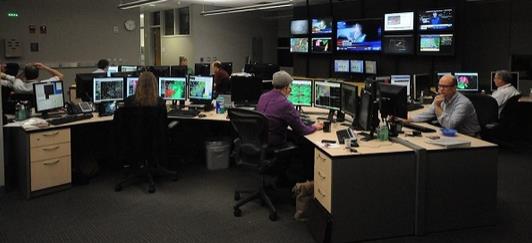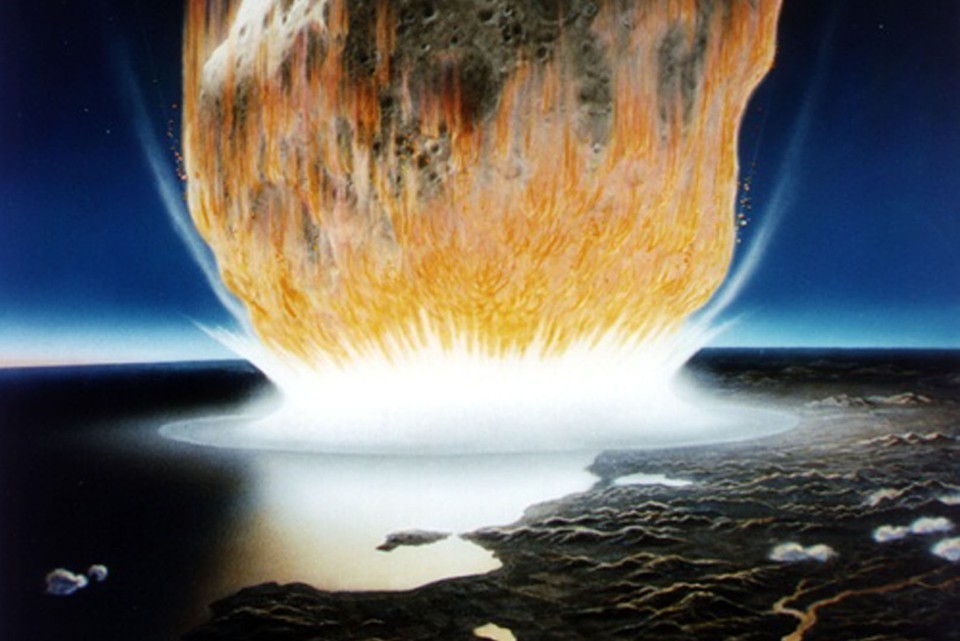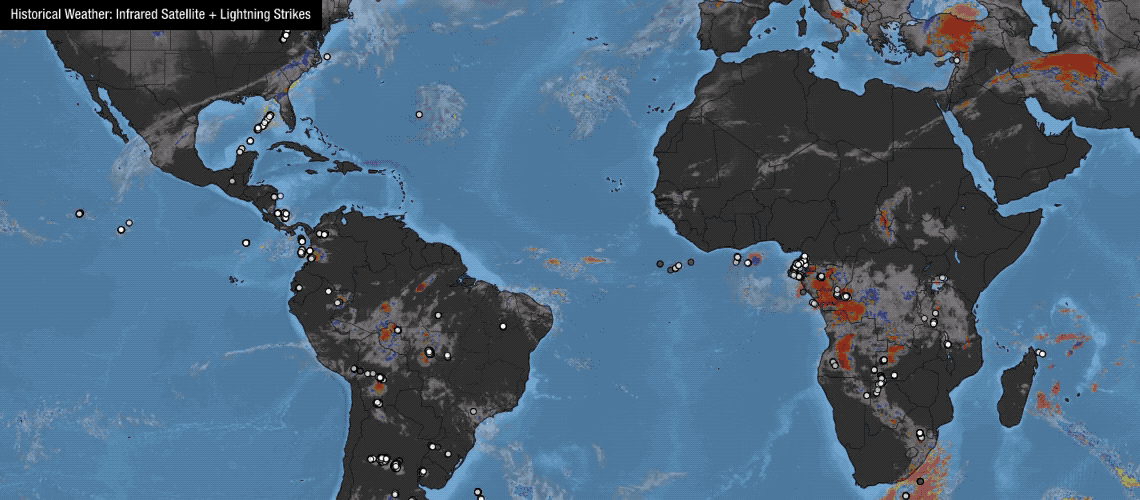Mother Nature owes us no apologies. The weather machine grinds on; we make plans – and get in the way. Atmospheric tantrums are uniquely democratic; everyone is impacted. That said, we all consume weather differently, based on age, our commutes and personal interests. Everyone has an opinion – and no shortage of stories.
Onward and Upward. We’ll see a few chilly days the first half of next week with metro highs in the upper teens to around 20F. Nippy, but hardly polar. ECMWF guidance shows highs in the upper 30s to near 40F as we end out the month of February. Graphic: WeatherBell.
Modified Zonal Pattern for March 1. GFS models continue to hint at a split flow with a nearly stationary cut-off low over the western USA; the main belt of westerlies whisking Pacific air across British Columbia into Minnesota. New England and the Mid Atlantic looks colder than average as we sail into March.

– George Santayana
“Meteorologists are preoccupied with predicting some future state of the atmosphere. Too many days it’s a thankless, seemingly impossible task. To have any real success forecasting the weather it’s essential to look back in time to see what already happened, and why? Our humbling new reality: every storm is different, each weather scenario uniquely challenging. The atmosphere has never been identical to the one outside your window right now. The only way to accurately model the future is to analyze the past, with a high degree of reliability and granularity. Counterintuitively, there is much value to be unlocked by carefully examining past weather trends, tracking repeatable patterns in weather and climate that optimize business operations for inevitable swings in temperature, moisture, and severity. Past is prologue. The weather never repeats, but often – it rhymes…”


Scientists Know How You’re Respond to Nuclear War, and They Have a Plan. WIRED.com lays out the scenario nobody wants to think about: “It will start with a flash of light brighter than any words of any human language can describe. When the bomb hits, its thermal radiation, released in just 300 hundred-millionths of a second, will heat up the air over K Street to about 18 million degrees Fahrenheit. It will be so bright that it will bleach out the photochemicals in the retinas of anyone looking at it, causing people as far away as Bethesda and Andrews Air Force Base to go instantly, if temporarily, blind. In a second, thousands of car accidents will pile up on every road and highway in a 15-mile radius around the city, making many impassable. That’s what scientists know for sure about what would happen if Washington, DC, were hit by a nuke…”
Odd Couple of Energy Agrees on One Thing: Clean Power is Coming. Here’s the intro to a story at Bloomberg: “Two groups that have been at odds in the past over environmental issues have come together on Valentine’s Day to promote clean energy. The Natural Resources Defense Council, a New York-based environmental advocacy group, and Edison Electric Institute, the utility industry’s main trade group, presented a list of policy recommendations Wednesday at a national meeting of utility regulators. Their ideas are aimed at increasing the use of wind and solar power, boosting energy-efficiency measures, raising spending on smart grids and spurring wider adoption of electric cars. “Our perspectives and constituencies are very different, but we find much common ground,” the two groups said in a statement Wednesday. “A clean energy transition is underway and accelerating...”
Image: U.S. Department of Energy.
Could Electric Vehicles Become as Common as Smart Phones. Sacramento Bee has the article: “...The cost of EV batteries – the vehicles’ most expensive component – dropped by 74 percent from 2010 to 2016, even as driving range increased every year. Last year, global electric vehicle sales topped one million for the first time in history. Countries including China, India and the U.K. have announced plans to phase out gas-powered cars entirely. In addition to the market and technological improvements we’re seeing, analysts believe the advent of autonomous vehicles will further change the automotive industry. Fleets of self-driving electric cars that people hail instead of owning their own vehicles may not be that far off. But other factors could slow the growth of zero-emission transportation…”
Photo credit: “Electric cars are parked atop the Los Angeles Police Department parking lot in 2016.” Nick Ut AP file.
In Oklahoma, a War Over Wind Power. The Houston Chronicle reports: “The fossil fuel and renewable power industries have fought a low-grade conflict for years, maneuvering in state capitols and Congress to gain advantage in tax and energy policies that might increase or protect market share. But in Oklahoma, where officials are contending with a massive budget deficit, the long-simmering tensions have broken out into a war over wind power that has already eliminated the state’s renewable energy tax credit program and threatens to further undermine financial supports for the burgeoning wind industry. In the latest development, a plan backed by oil and gas interests to impose new taxes on wind energy production failed in the Oklahoma House this week when it failed to gain the three-fourths majority needed to approve tax increases…”
Photo credit: “In this Monday, June 12, 2017 file photo, wind turbines are pictured near El Reno, Okla. Oklahoma rolled out the red carpet to the growing wind industry two decades ago with the promise of generous state tax incentives and a steady stream of wind sweeping down the Central Plains. But with budget shortfalls that have persisted for several years, lawmakers have already scaled back almost all of the incentives and are now looking to impose a new production tax on the industry.” (AP Photo/Sue Ogrocki, File)
8 Sure Habits of Exceptionally Happy People. Inc.com has an interesting story – here’s the intro: “The best conversations in life are initiated by learning about what other people do, how they do it, and why they do it. In turn, the happiest people show up with the humble gesture of “I want to learn from you” and invite that person to coffee to soak up their wisdom. They know it will make them better for it, and the other person appreciate the gesture and pay it forward. Now, to really take it to another level, seek out someone younger and less experienced who brings real value to your work or life in an area unfamiliar to you, and learn from that person….”
Robots Remind Us How Far Away the Apocalypse Is. I want to be one of the people maintaining the robots. Here’s an excerpt from Quartz: “Robots can ski too, sort of. A short drive from the Olympic games in PyeongChang, South Korea is hosting another winter sporting event: Alpine skiing with robots. Eight teams from universities and companies across the country competed. Each team sent a completely autonomous humanoid down a 70-meter-long ski slope, equipped with sensors to detect obstacles. The result was impressive at times, but mostly comical. Check out the video above to watch the highlights...”
North Korean Cheerleaders Caught Off-Guard by Fake Kim Jong Un. Reuters has the story; here are a couple of excerpts: “A group of North Korean cheerleaders were briefly wowed by the apparent, sudden arrival of their leader, Kim Jong Un, at a Winter Olympics ice hockey game on Wednesday. Some cheerleaders immediately averted their gaze as the impersonator, who later only identified himself as Howard, smiled and waved to crowds who came to watch a unified Korean team play Japan at the Pyeongchang Games…He said he was briefly detained inside a police office during Wednesday’s match then “politely asked” to leave. “My face is too political,” the dejected impersonator said as he walked slowly out of the ice hockey stadium...”
Photo credit: “Ice Hockey – Pyeongchang 2018 Winter Olympics – Women Preliminary Round Match – Korea v Japan – Kwandong Hockey Centre, Gangneung, South Korea – February 14, 2018. A North Korean leader Kim Jong-un lookalike waves in the stands.” REUTERS/Staff.
Canadian Lawmaker Uses “Tight Underwear” Excuse to Explain Absence. You just can’t make this stuff up. Here’s an excerpt from NPR: “A member of Canada’s House of Commons has earned laughs and toasts from his colleagues, after he blamed his absence during a vote on tight underwear that makes him uncomfortable. MP Pat Martin of Winnipeg Centre gave the explanation to foil an attempt to have his vote thrown out because, contrary to parliamentary rules, he had left his seat during the voting process. “I can blame it on a sale that was down at the Hudson’s Bay [store],” Martin announced. “They had men’s underwear on for half price. I bought a bunch that was clearly too small for me…”
Image credit: “An explanation by Canadian legislator Pat Martin brought laughs and applause from his colleagues.” YouTube.
4″ snow on the ground at MSP International Airport Thursday evening.
38 F. maximum temperature yesterday (10:45 am)
29 F. average high on February 15.
36 F. high on February 15, 2017.
February 16, 1981: A significant warmup occurs across Minnesota. Highs in the 50s and 60s are common. 5 daily high records are broken in a row in the Twin Cities, with many others also broken statewide.
February 16, 1903: A temperature of -59 is recorded at Pokegama Dam, tying the state record low at that time. It would not be broken for another 93 years.
“We are all pencils in the hand of a writing God, who is sending love letters to the world.” – Mother Teresa
FRIDAY: Sunny and chilly. Winds: SW 8-13. High: 20
FRDAY NIGHT: Clouds increase, flurries late. Low: 17
SATURDAY: Coating to 1″ of snow. Slick spots. Winds: W 8-13. High: 31
SUNDAY: Windy with wet snow up north. Winds: S 8-13. Wake-up: 23. High: near 40
MONDAY: Period of wet snow possible. Winds: NE 10-15. Wake-up: 22. High: 26
TUESDAY: Flurries linger – slippery roads. Winds: NW 8-13. Wake-up: 13. High: 20
WEDNESDAY: Blue sky, still unnecessarily chilly. Winds: NW 5-10. Wake-up: 6. High: 19
THURSDAY: Partly sunny, trending milder again. Winds: S 5-10. Wake-up: 10. High: 28
Climate Stories…
Marine Corp General Says Its Parris Island Boot Camp is Threatened by Climate Change. Details via The Washington Examiner: “The Marine Corps’ iconic Parris Island boot camp is threatened by rising seas, Gen. Glenn Walters, the service’s assistant commandant, said Wednesday. Walters told the Senate Armed Services Committee that the base on the South Carolina coast faces the “most critical vulnerability” among Marine installations when it comes to sea rise, and a seawall may be needed to protect it…The Navy also testified to the Senate committee Wednesday that it faces stark threats from sea rise to many of its bases over the next 30 years unless some action is taken. Rising sea levels are widely attributed to climate change, which the Trump administration has cut from its new national security strategy. Meanwhile, Congress has called climate change a direct threat to national security and ordered the military to take a closer look at its facilities over the coming year…”
Photo credit: “New Marines run under the iconic “We Make Marines” sign during a traditional motivational run through the streets of Parris Island, S.C. Marine Corps general says that the base faces the “most critical vulnerability” among Marine installations when it comes to sea rise, and a seawall may be needed to protect it.” (Photo: Marine Corps).
Climate Change Revealed This U.S. Military Secret. Popular Science explains: “...The Army never finished what it started at Camp Century. It abandoned the base in 1967, scrapping Project Iceworm, as its secret mission was called. But the Army left behind a nasty legacy buried under all that ice and snow — tons of toxic waste that military officials assumed would stay frozen forever. Guess they didn’t count on climate change. Fifty years ago, the Army probably didn’t know about climate change. But now, thanks to global warming, the ice has begun to melt, leaking chemicals the Army thought would stay frozen in perpetuity. This poses a danger to the marine ecosystem, not to mention the potential diplomatic nightmare that could result between the United States and the host country…”
Photo credit: “A nuclear power plant at Camp Century.” U.S. Army
More Extreme Weather on the Horizon With Increased Warming: From Climate Nexus: “The world could see a significant increase in extreme weather events even with just a slight uptick in warming, a new study shows. The study, published Wednesday in the journal Science Advances, finds that 2 to 3 degrees C of additional warming could see five times more record-setting hot nights over half of Europe and lead to three times as many record-setting wet days in parts of the US. “Sizeable increases” in extreme hot and wet days, the study’s authors write, are still likely even if the world keeps warming under the 1.5 degree C target set out in the Paris Agreement. “Damages from extreme weather and climate events have been increasing, and 2017 was the costliest year on record,” lead author Diffenbaugh said. “These rising costs are one of many signs that we are not prepared for today’s climate, let alone for another degree of global warming.” (USA Today, LA Times $, Phys.org).
Graphic credit: Climate Central.
Lisa Murkowski Challenges Her Fellow Republicans: “Why is it Politically Charged to Say Climate Change?” I feel your pain, Senator. Here’s an excerpt from The Washington Examiner: “Sen. Lisa Murkowski, R-Alaska., the chairwoman of the Senate Energy and Natural Resources Committee, challenged her party on Wednesday morning to take climate change more seriously. “We have to have a better discussion about climate change and the responses to it,” Murkowski said during an address at the National Association of Regulatory Utility Commissioners’ Winter Policy Summit. “We have to not be afraid to use terms that some might say, that’s politically charged. Why is it politically charged to say climate change? I see in my state the impact we have from warming temperatures...”
Photo credit: “We have to not be afraid to use terms that some might say, that’s politically charged. Why is it politically charged to say climate change?” Sen. Lisa Murkowski asked. “I see in my state the impact we have from warming temperatures.” (AP Photo/Jacquelyn Martin)
Intelligence Agencies Break With White House, Pentagon on Climate: From Climate Nexus: “US intelligence agencies warned that climate change poses a long-term and immediate threat to the United States in a report submitted to the Senate Intelligence Committee yesterday. The agencies’ annual Worldwide Threat Assessment report for 2018 contains an unambiguous section on the risks posed by environment and climate change, stating that “long-term trends toward a warming climate, more air pollution, biodiversity loss, and water scarcity are likely to fuel economic and social discontent–and possibly upheaval — through 2018.” The report comes a few weeks after the Pentagon’s updated National Defense Strategy (NDS) broke with Obama-era policy and excluded climate change. In December, the White House introduced its National Security Strategy, which did not recognize climate change as a threat.” (InsideClimate News, Bloomberg).
6 Surprising Ways Climate Change Impacts Health. Care2.com has an interesting post; here’s a clip: “.. In fact, if you already have a heart condition, a heat wave can increase your risk of mortality by as much as 15 percent. It’s especially dangerous if temperatures spike quickly from day to day. About 25 million people in the U.S. suffer from asthma. Diagnoses have been on the rise, and climate change may be part of the problem. Pollen is a major trigger for many people with asthma, and a changing climate is good news for many pollen-producing plants. Warmer weather means a longer allergy season, which translates to more asthma attacks…”
File image: Thinkstock.
Miami Could Be Underwater In Your Kid’s Lifetime as Sea Level Rise Accelerates. USA TODAY explains: “…At the current rate of melting, the world’s seas will be at least 2 feet higher by the end of the century compared to today, according to research published in the Proceedings of the National Academy of Sciences. Such a rise could leave portions of the world’s coastal cities underwater. It would also increase high tides and worsen storm surges. “This acceleration … has the potential to double the total sea level rise by 2100 as compared to projections that assume a constant rate — to more than (2 feet) instead of about (1 foot).” said Steve Nerem, the study lead author and a professor of aerospace engineering sciences at the University of Colorado in Boulder. “And this is almost certainly a conservative estimate,” he added. Scientists looked 25 years of satellite data to calculate the levels of Earth’s seas…”
Satellite Observations Show Sea Levels Rising, and Climate Change is Accelerating It. Here’s an excerpt from a CNN summary: “…Using satellite data rather than tide-gauge data that is normally used to measure sea levels allows for more precise estimates of global sea level, since it provides measurements of the open ocean. The team observed a total rise in the ocean of 7 centimeters (2.8 inches) in 25 years of data, which aligns with the generally accepted current rate of sea level rise of about 3 millimeters (0.1 inches) per year. But that rate is not constant. Continuous emissions of greenhouse gases are warming the Earth’s atmosphere and oceans and melting its ice, causing the rate of sea level rise to increase….”
Map credit: “Changes in sea level observed between 1992 and 2014. Orange/red colors represent higher sea levels, while blue colors show where sea levels are lower.” NASA.


